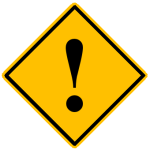Now that we’ve a general idea of how to get the most from your dance practice, let’s look at three common issues all dancers face and how to resolve them by asking questions and experimenting.
To improve your dancing without an instructor, you must be patient and observant of what feels comfortable, balanced, and smooth… and what does not.
1. ‘I just can’t seem to stay on time to this music.’
The key here is determining where the beat is. The beat is any emphasis or upswell in the music, that occurs regularly and rhythmically. Drums are the most common indicator of the beat, but other instruments can take it’s place. Once you can hear it, you can start moving your feet to it!
Example questions:
- Do I hear drums in this song?
- If I don’t hear drums, where is there a rhythmic emphasis or upswell in the music?
- Am I having trouble with all music of this style, or just this song/part of this song?
2. ‘I can’t seem to connect with my partner’
There’s many ways to connect in dancing, so make sure you have at least a basic understanding of what you’re working with from your instructor. For instance, if your underarm turn feels strange, you should already know about twisting from the hips, keeping the arm in front of you in an L-shape, and so on. It all comes back to knowing when and where to guide or respond to your partner, and/or make sure you are moving or being moved with the lead.
 This section is not going to teach how to ‘create’ the connection if you’ve never done it before. If you are uncertain about the proper way to do something, consult an instructor!
This section is not going to teach how to ‘create’ the connection if you’ve never done it before. If you are uncertain about the proper way to do something, consult an instructor!
Example questions:
- Am I having difficulty connecting for the whole dance, or only specific steps or parts of steps?
- If I increase pressure, does my partner respond or does their frame collapse?
- Am I standing up straight and leading/following from my belt buckle?
3. ‘I can’t keep my balance on turns.’
Two things guarantee a controlled turn: weight over the turning foot and power from the hips. You might need a straighter posture, or make sure that you aren’t letting your arms or legs swing out during the turn.
You may also be falling out of the turn if your weight isn’t 100% on the turning part of the foot before you begin the turn. This usually means you’ve been pushing around with the feet instead of twisting the hips.
Example questions:
- Can I turn better in one direction than the other? What am I doing differently?
- What do I move to create the power for the turn?
- Do I always fall out of the turn in the same direction? What could be pulling me in that direction?
 Pace yourself when practicing turns, and take a break when you start to get dizzy. If the world is spinning, it’s probably a bad time to join in.
Pace yourself when practicing turns, and take a break when you start to get dizzy. If the world is spinning, it’s probably a bad time to join in.
